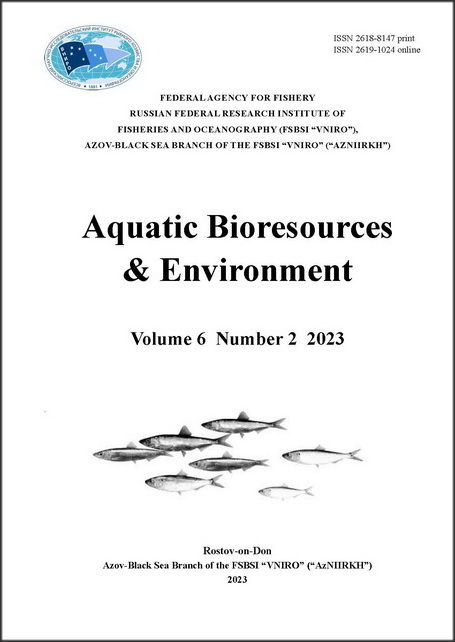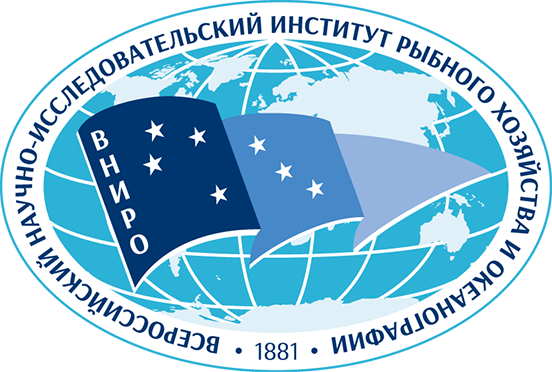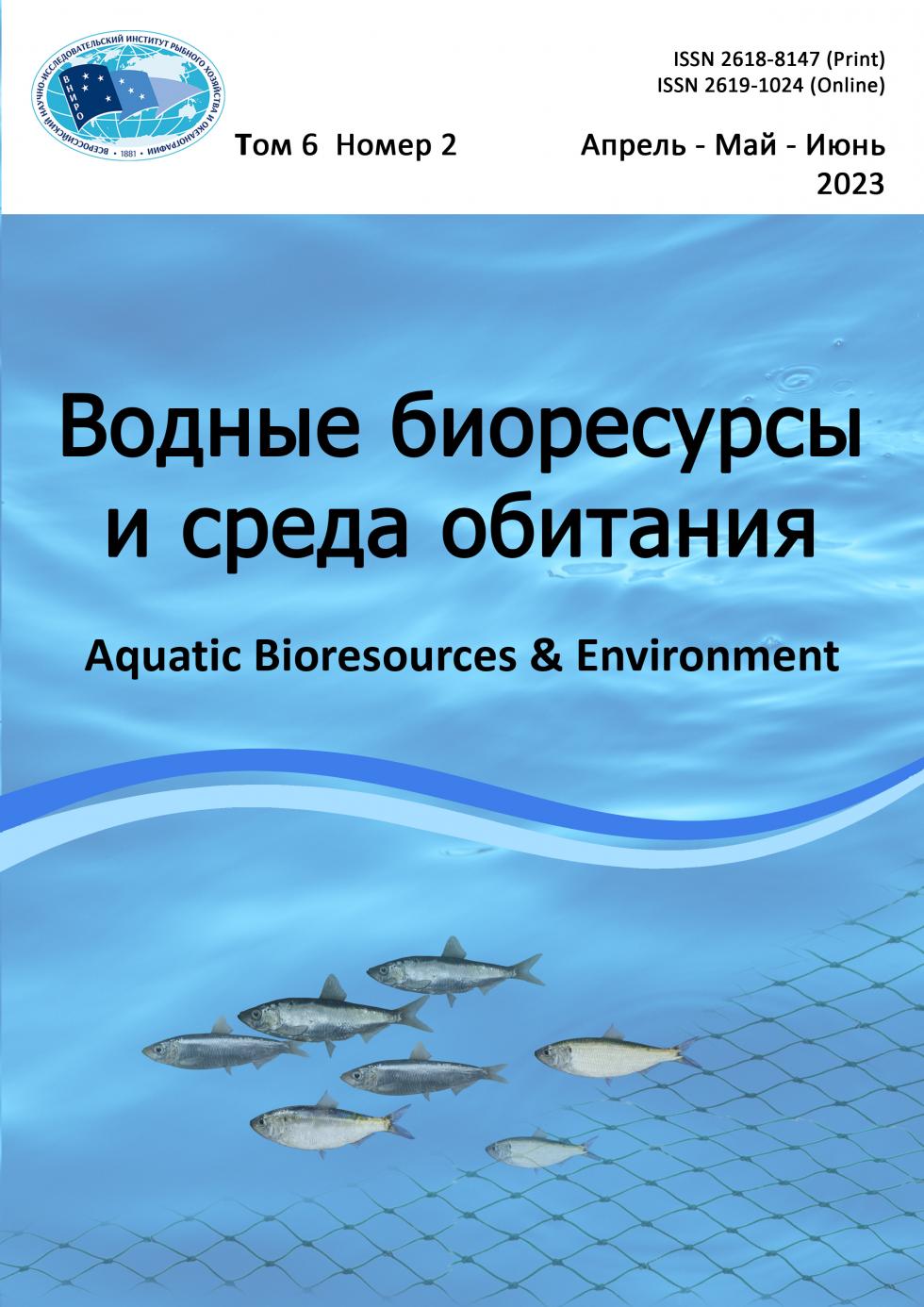

Environmental Concerns and the State of Aquatic Environment
A.T. Kochergin
Abstract. Considerable inter-annual variations of water temperature and salinity in the Azov Sea necessitate their constant monitoring. Following the numerous studies undertaken in this area, this work presents the specific features of inter-annual changes in temperature and salinity of the sea surface layer, averaged for the summer seasons of 1989–2021 both for the Azov Sea (excluding Taganrog Bay) and for its various areas; two representative time spans, 1989–2004 and 2005–2021, have been identified. The first time span was characterized by a relatively wide variation range of the temperature and by its decreased values, as well as by the decrease in the salinity. During the second time span, an increase in the both temperature and salinity of the sea surface layer occurred in the sea and its regions, which was induced by the increase in the air temperatures in the area and by the reduction of the relatively cold Don River runoff after 2005 in the case of the first parameter, and, for the second parameter, it resulted from the decrease in the runoff of the both Don and Kuban Rivers. Correlation analysis of the series of the summer temperature and salinity values by area and for the sea on the whole as they relate to the annual and maximum runoff of the Don River (Razdorskaya) and to the annual runoff of the Kuban River (Krasnodar and the river mouth) for 1989–2021 has shown the absence of the significant relationship with temperature and its presence with salinity both for the sea and for most of its regions at the confidence level of 99 % for the Don River runoff and 95 % for the Kuban River runoff.
Keywords: temperature, salinity, Azov Sea, runoff, Don River, Kuban River, correlation
Overview of major water oil spill management techniques and evaluation of their efficiency
T. A. Naumova, A. G. Naumov, Yu. S. Kotov
Abstract. The extraction, transportation and sale of “black gold” is an integral component of the sustainable economic development of the Russian Federation. Due to the remoteness of most hydrocarbon extraction sites, adverse climate-related impact on the timing of the transfer of extracted resources, and high operational loads on the equipment, the threat of technogenic environmental pollution by oil and its products persists. Despite the existing options for timely prevention and efficient management of such events, the choice of the optimal clean-up method remains open. This article identifies the main methods of dealing with oil spills in the aquatic environment, provides their brief description, and indicates their efficiency. The authors present the technical solution (a specialized carrier) they are developing, which combines the features of the three main methods for eliminating artificial oil pollution (mechanical, physico-chemical, and biological) of the water surface. The proposed technical solution, in the authors’ opinion, will allow for optimization of the clean-up practices for technogenic hydrocarbon spills.
Keywords: oil, additive manufacturing, clean-up, carrier, bioremediation
B. N. Panov, S. S. Smirnov, E. O. Spiridonova
Abstract. In 2019–2022, the Black Sea anchovy (Engraulis encrasicolus ponticus Alexandrov, 1927) was wintering off the western and southern coasts of Crimea, where it was subjected to heavy exploitation by the Russian fishers. The conditions resulting in the active autumn migration of the Black Sea anchovy into Crimean waters are of great scientific and practical concern. This study examines the course of the Black Sea anchovy fishing and the oceanographic conditions for its entry, migration and wintering near the southern coast of the peninsula in November and December 2021. The daily data from the FSBI “Centre of Fishery Monitoring and Communications” have been used, as well as the satellite imagery data sets of the sea surface heights and temperatures from the Copernicus Marine Service information system website. Altimetry data were used in the grid nodes with a resolution of 0.125 degrees, and temperature data were used in the grid nodes with a resolution of 0.05 degrees. Relocation of the Black Sea anchovy to Crimea in mid-November was caused by strengthening of the southeastern currents in the waters to the west of the peninsula, associated with the northern position of the Sevastopol Anticyclonic Vortex, as well as with relatively high sea surface temperatures beyond the shelf zone. In contrast to 2019 and 2020, in November and December 2021, an intense thermodynamic frontal zone of the main Black Sea current was located 15–30 miles offshore to the south of Crimea, which became a natural barrier to further migration of the Black Sea anchovy southwards and determined its distribution on the southern shelf of the Crimean Peninsula. The Black Sea anchovy fishing season in 2021/2022 off the coast of Crimea (as opposed to the previous two fishing seasons) was characterized by its relatively early start and the shift of the fishing operations eastwards to Cape Chauda.
Keywords: Black Sea anchovy, Crimean shelf, anchovy migration, altimetric information, satellite imagery, sea surface temperature, water circulation, industrial fishing
Biology and Ecology of Aquatic Organisms
Use of Artemia salina nauplii as the carrier for probiotic bacteria of Bacullus genus in aquaculture
M. S. Mazanko, A. V. Gorovtsov, V. A. Chistyakov, M. A. Morozova, E. V. Prazdnova
Abstract. This paper presents the results of the investigation of the effect of probiotic preparations based on Bacillus strains on Artemia salina nauplii. The use of live food is a necessary step in cultivation of many fish species, and Artemia nauplii are widely used for this purpose. It is crucial to use probiotics in aquaculture, as they can act as natural antagonists of aquatic pathogens, as well as stimulate fish growth and development. This work aims to study the immobilization of probiotic Bacillus strains on Artemia nauplii in order to develop highly effective feeds with probiotic properties for juvenile fish. Experiments on the introduction of various doses of preparations based on three probiotic strains of Bacillus into the water during the rearing of Artemia salina cysts were carried out. The number of bacteria in the water, as well as on the surface and inside the nauplii, was estimated by plating on nutrient media. It has been established that, despite the fact that brine shrimps do not feed at the orthonauplius stage, when probiotic strains are introduced into the water, bacteria are immobilized on the covers of the crustaceans; the concentration of the introduced Bacillus strains in the wipe samples taken from the nauplii surface is 1 order higher than it is for the planktonic form in the water. The introduction of bacilli at a dose of 0.0017 g/L activated the release of nauplii from cysts by 9–41 % of the control, while increasing the dose to 0.17 g/L led to a decrease in the proportion of hatched crustaceans. Thus, if the correct dosage were identified, it would make it possible to accomplish two important tasks at once: to obtain the live feed with probiotic properties for fish larvae and to increase the yield of nauplii.
Keywords: Bacillus, probiotics, Artemia salina, bioencapsulation
I. R. Selivanova, T. P. Khayrulina, I. A. Glebova, N. A. Golovacheva, A. N. Shillerova
Abstract. The main reasons for the decrease in feeding efficiency are dietary inadequacy and poor quality of the feed, which leads to its suboptimal consumption and accumulation of residue, which, in turn, results in deterioration of the hydrochemical regime. This study presents the comparative analysis of two fish feeds in terms of their safe use for Oncorhynchus mykiss (Walbaum, 1792) feeding and their impact on water quality. The investigation was conducted on the rainbow trout individuals in the recirculating aquaculture system at the Aquaculture Center of the K.G. Razumovsky Moscow State University of Technologies and Management in 2021–2020 and involved the comparison of the feeds CRYSTAL (protein content
42.65 %) produced by Alltech Coppens and Basic PL 45/20 A50 (protein content 45.81 %) produced by BNBC (Belarusian National Biotechnology Corporation). Six test groups were included in the experiment: three groups were fed with Alltech Coppens CRYSTAL and the other three groups were fed with BNBC Basic PL compound feed. The biochemical characteristics of the rainbow trout blood serum have been identified using the blood taken from a caudal vein, and the hydrochemical characteristics of the water have been identified using standard procedures. A distinct relationship between the protein content in Oncorhynchus mykiss blood serum and protein content in the feeds has been found. The hydrochemical characteristics of the water in the recirculating aquaculture system over the course of the experiment remained within the normal range, with exception of iron that had been present before the experiment and did not have an adverse effect on the fish’s health.
Keywords: feed, aquaculture, rainbow trout, blood biochemistry, Oncorhynchus mykiss, salmonids, fish, ecological safety
Ichthyofauna of Marine and Inland Water Bodies
A. V. Kovalevskiy, I. B. Babkina, N. V. Skalon, E. M. Luchnikova, S. E. Shchetinin, N. V. Ivanova, K. S. Zubko
Abstract. The resumption of design and survey work for the construction of the Krapivinsky Hydroelectric Power Plant on the Tom River has necessitated the assessment of the current state of its fish resources and called for making the prediction of their transformation in the event of the hydroelectric complex being put into operation. In the early 20th century, the Tom River was classified as a salmonid habitat. At that time, such valuable commercial species as the Siberian taimen Hucho taimen, blunt-snouted lenok Brachymystax tumensis, tugun Coregonus tugun, humpback whitefish Coregonus pidschian, Nickolsky’s grayling Thymallus nikolskyi, nelma Stenodus leucichthys nelma, muksun Coregonus muksun, and peled Coregonus peled were permanent residents. Sturgeons, such as the Siberian sturgeon Acipenser baerii and sterlet Acipenser ruthenus, were also abundant. Currently, out of these species, grayling, occasionally taimen and lenok are caught in the Tom River; the common roach Rutilus rutilus, European perch Perca fluviatilis, Siberian dace Leuciscus baicalensis and Eurasian ruffe Gymnocephalus cernuus comprise 95 % of all fish caught. If construction of the Krapivinsky Reservoir on the Tom River is completed and it is put into operation, a deep-water, slow-flowing “lake-type” water body will be created. The river bed will be blocked, so semi-anadromous fish species, many of which are listed in the Red Data Book—such as Siberian sturgeon, sterlet and nelma,—will disappear. A decrease in the abundance of grayling, taimen and lenok, already low in number, should also be expected. These fish species winter in the pits, some of them migrate to the Ob River, so, after passing the spillway, they will not be able to return upstream to the spawning grounds. The abundance of lake and lake-river species is expected to increase, among them the common roach, dace Leuciscus leuciscus, European perch, Prussian carp Carassius gibelio (introduced locally, subsequently self-dispersed), as well as common bleak Alburnus alburnus and sunbleak Leucaspius delineates (accidental invaders). In the future, it is possible to make an attempt to introduce peled to the upper basin of the Krapivinsky Reservoir. There is a prospective threat of the Chinese sleeper Perccottus glenii spreading in the upcoming reservoir, which can severely undermine its fish stocks.
Keywords: hydroelectric power plant, biological resources, fish, ecology, hydroelectric complex, Acipenseridae, Cypriniformes, Salmonidae, Perciformes, Chinese sleeper
Trophic basis of the European anchovy stock development in the Azov Sea
Z. A. Mirzoyan, V. P. Nadolinskiy, M. L. Martynyuk, R. V. Nadolinskiy
Abstract. Formation of the European anchovy Engraulis encrasicolus (Linnaeus, 1758) stocks in the Azov Sea depends on the development of zooplankton, which is the main food source for this fish species. Under the conditions of the natural flow regime of the rivers (1937–1951) and the 10.6 ‰ salinity of the sea, native zooplankton species ensured a high food supply for the anchovy, which resulted in relatively large anchovy stocks. During the Azov Sea salinization up to 12.8 ‰ that occurred in the late 60–70s of the last century, the zooplankton species composition changed. Predatory scyphoid jellyfish species—Aurelia aurita and Rhizostoma pulmo—underwent drastic increase in abundance, which led to the reduction in the summer biomass of the zooplankton almost by half. During that period, large stocks of the European anchovy developed less often. In the late 1980s, as a result of the introduction of a predatory ctenophore Mnemiopsis leidyi in the Azov Sea, the summer biomass of the zooplankton decreased further by 2–3 orders of magnitude. During the feeding season of the European anchovy, the areas with high zooplankton productivity disappeared, which resulted in the recurring low stocks of this fish species. At the end of the 1990s, a ctenophore Beroe ovata, feeding on the mnemiopsis, appeared in the Azov Sea. Its invasion led the delayed entry of the mnemiopsis into the sea, which, in turn, ensured the development of a sufficient food supply for the anchovy during its pre-spawning period. However, the main feeding season of the anchovy, just as before the arrival of B. ovata, took place under a shortage of the food supply. In the last few years, another increase in salinity to 15.0 ‰ is observed in the Azov Sea. The Black Sea jellyfishes
A. aurita and R. pulmo are actively developing once again and, along with M. leidyi, provide even
stronger food competition for the anchovy. During these years, only low-productive generations and low stocks of this fish species have been observed.
Keywords: Azov Sea, salinity, zooplankton, food supply, high productivity zones, abundance, biomass, jellyfish, ctenophores, feeding, European anchovy, ichthyoplankton, productivity, stock, fat content
A. N. Mikhaylyuk
Abstract. To characterize fish sexual maturity, such parameter as the length at which 50 % of individuals are sexually mature is widely applied. The conventional practice is to use the fish length values directly, without their preliminary logarithmic transformation. However, based on theoretical considerations, such logarithmic transformation should be expected to improve the quality of approximation of the relationship between the percentage of mature individuals and their length. This study is aimed at the testing of the hypothesis that logarithmic transformation improves the quality of approximation of the data on fish maturity, as well as at the assessment of practicability and expedience of the logarithmic transformation when estimating the length at which 50 % of the individuals are sexually mature. This research is conducted based on the published data. Approximation was carried out using two methods: by the probability integral of a normal distribution and by the logistic function. Following the data analysis involving an original two-level approach, it has been found out that the preliminary logarithmic transformation of the length values statistically significantly improves the quality of approximation. However, this pattern manifests only in the case of analyzing a certain volume of data sets. The difference between the results obtained using transformed and non-transformed length values is not big and, oftentimes, unsubstantial. Nevertheless, in some cases, such a difference is noticeable, which provides a reason to recommend the logarithmic transformation of the fish length values when conducting the analysis. It is also demonstrated that, during the estimation of the length at which 50 % of the individuals are sexually mature, both tested functions are equally suitable for approximation.
Keywords: fishes Pisces, research methods, length, sexual maturity
Fisheries and Processing of Aquatic Bioresources
L. M. Esina, I. A. Belyakova, Z. E. Ushakova, D. V. Shtenina
Abstract. Increase in the barrel jellyfish abundance, recently observed in the Azov and Black Sea Fishery Basin, has an adverse effect on the fishery and tourism in the region. Jellyfish consumption is a long- standing tradition for the countries of East and Southeast Asia, where the processing technology for jellyfish is based on the salting involving potassium alum. Jellyfish treatment with potassium alum leads to the accumulation of aluminum in the final product, which poses a threat for the human health. Thus, the research of the jellyfish processing methods excluding the use of aluminum is of utmost importance. This study was aimed at the development of the salting methods for barrel jellyfish Rhizostoma pulmo that would involve using plant-based tanning substances. This article presents processing scheme and technological parameters for the salted products derived from jellyfish. Using tanning substances extracted from oak bark and green tea leaves in the quantity of no less than 0.75 % of the jellyfish brought for salting (in terms of weight) made it possible to obtain the salted product with condensed structure. For a lightly salted product, salting should be conducted in 8–10 % saline solution at the temperature 4±2 °С. Based on the identified technological parameters and the assessment of quality and safety characteristics of the obtained samples of salted jellyfish, specifications and processing instruction for the salted products derived from jellyfish for its further use as a food ingredient in multicomponent recipes have been developed.
Keywords: jellyfish, Rhizostoma pulmo, salting, tanning substances, oak bark, tea, potassium alum, microbiological characteristics



